On January 30, 1934, a majestic full moon illuminated the winter sky from Campobello Island to Hawaii and Alaska to the Virgin Islands. A stimulating setting for the young and old, the rich and poor, all those who came out, en masse, in formal and informal attire to attend the first of the Presidents Birthday Balls.
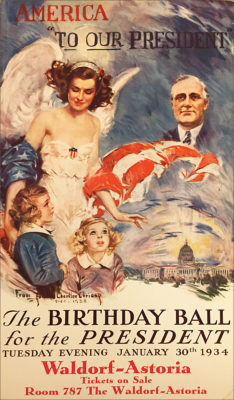
During one of the cruelest periods of the Great Depression, the social elite and the average citizen would gather, nation-wide, from coast to coast and border to border for a noble purpose. One that honored the new president, but also created an endowment through which the Georgia Warms Springs Foundation could battle a decades old scourge, polio.
In the White House that evening President Franklin Delano Roosevelt (FDR), who was in the first year of his administration as the 32nd US President, was surrounded by an intimate group of friends and family. Together they celebrated his fifty-second birthday, but this birthday and how it would be honored in the years to come, would be different.
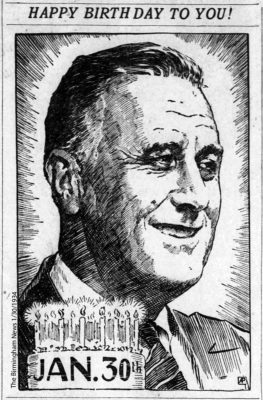
In 1934, the mineral-charged waters of Warm Springs, Georgia worked a magic spell over those who suffered from the disease. The hope then was buoyed by the idea that celebrating the presidents birthday, in a fund raising way, might create a permanent legacy to treat as many patients as the natural thermal springs could accommodate and hopefully find a cure.
What began as parties to benefit the Georgia Warm Springs Foundation would, decades later, result in the creation of an effective inoculation, one that could eliminate the disease of poliomyelitis, thereby benefiting millions all over the world.
Radio Introduction Interrupted
Having fundraising “birthday balls” came at the suggestion of Col. Henry L. Doherty, business magnate and political ally of FDR’s. Doherty made a $25,000 donation to launch the National Committee for Birthday Balls and became its first chairman. Doherty would also recommend that the president make a live radio address with a personal message of thanks; a broadcast that would be heard in the auditoriums, ballrooms, halls and Civilian Conservation Corps (CCC) camps hosting the celebrations. As the national committee chairman, Doherty, would have the distinct honor of introducing the president over the airwaves. This radio announcement would not be without some pre-broadcast drama.
Shortly before stepping up to the microphone Doherty was unexpectedly interrupted, a “process server” strode forward and served him with legal papers, a summons regarding a lawsuit filed the previous July. This intrusion appears to have had no adverse effect on the mission to introduce the president, and Doherty, who was no stranger to lawsuits, would continue as the National Committee for Birthday Balls chairmen.
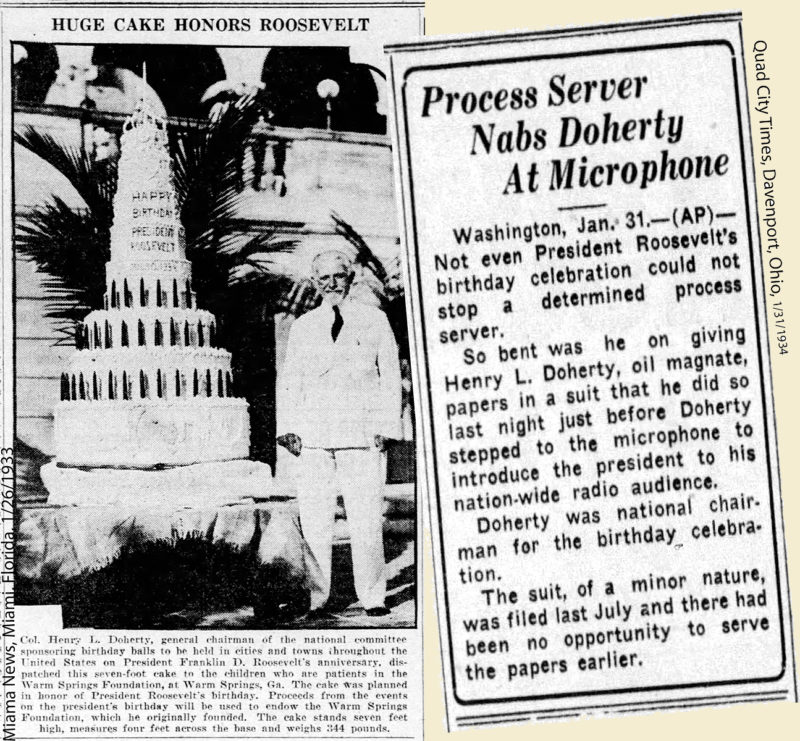 Radio Brought the President to the Party
Radio Brought the President to the Party
A hush fell over the festivities at the first sound of Roosevelt’s voice. To the thousands in attendance their “Mr. President” may have been the absent guest of honor, but this New Deal President was there in spirit, and his radio address was applauded by a receptive, diverse and united audience.
He thanked them all for their support on the “happiest birthday I have ever known” and also shared encouragement for the cause so close to his heart…
“Let us well remember that every child and indeed every person who is restored to useful citizenship is an asset to the country and is enabled “to pull his own weight in the boat.” In the long run, by helping this work we are contributing not to charity but to the building up of a sound Nation. . . I am with you all in spirit and in the promotion of this great cause for which we all are crusading.”
Decadent Galas and Simple Celebrations
These common celebrations and elaborate birthday galas brought people together socially, many for the first time, in the cities and hamlets of the nation. 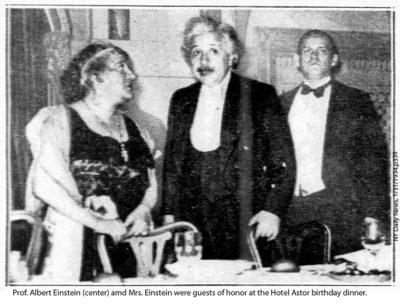 The New York City Astor Hotel guest of honor was non-other than Professor Albert Einstein and the Waldorf Astoria hosted elaborate events in their multiple ballrooms, with Mrs. Sara Delano Roosevelt, the presidents mother, presiding. A highlight of the evening was the parading of a five tiered presidential birthday cake onto the Waldorf Astoria ballroom floor. The confectionery masterpiece was surrounded by fifty-two NYC debutantes, gowned in white satin and carrying 2 ft long white candles “lit by the latest in portable battery gadgets.” Mrs. Roosevelt ceremoniously cut the birthday cake. The debutantes chanted a happy birthday song, toasts were made, and the candles were auctioned off. The NYC galas successfully raised thousands of dollars to combat and treat the scourge of infantile paralysis.
The New York City Astor Hotel guest of honor was non-other than Professor Albert Einstein and the Waldorf Astoria hosted elaborate events in their multiple ballrooms, with Mrs. Sara Delano Roosevelt, the presidents mother, presiding. A highlight of the evening was the parading of a five tiered presidential birthday cake onto the Waldorf Astoria ballroom floor. The confectionery masterpiece was surrounded by fifty-two NYC debutantes, gowned in white satin and carrying 2 ft long white candles “lit by the latest in portable battery gadgets.” Mrs. Roosevelt ceremoniously cut the birthday cake. The debutantes chanted a happy birthday song, toasts were made, and the candles were auctioned off. The NYC galas successfully raised thousands of dollars to combat and treat the scourge of infantile paralysis.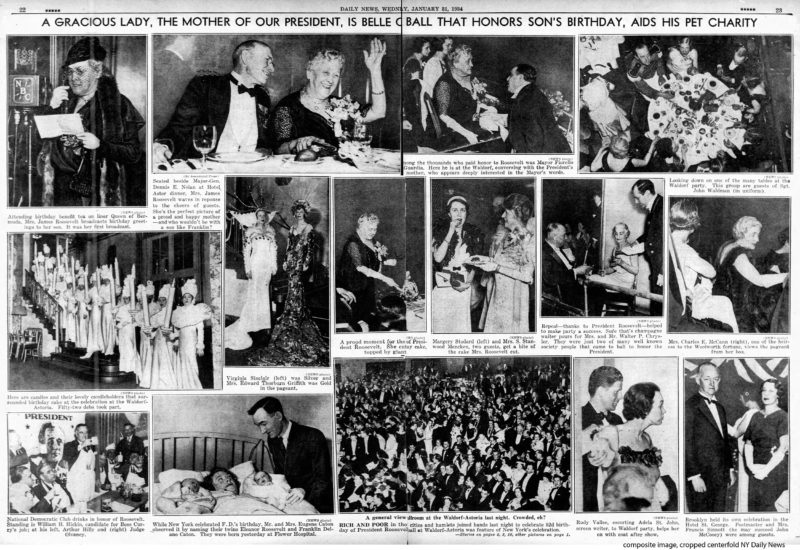
A Two Day Birthday Celebration in Alabama
Joining in the Presidential Birthday festivities were the Alabama communities of Colbert County and Muscle Shoals, assisted by the local Civilian Conservation Corps (CCC) camps located on the banks of the Tennessee River. Together they organized a two day event hosted in the spacious new CCC camps auditorium at the Nitrate Plant No. 2.
The Alabama CCC camps were ideally situated in proximity to the Tri-Cities of Sheffield, Florence and Tuscumbia. Hundreds of CCC boys joined local residents, along with camp and town officials to partake in memorable evenings of dancing, eating and celebration; festivities lasting into the early hours of the morning.
By the time FDR gave his live radio address throngs had gathered at the newly constructed and spacious CCC Recreational Hall. Attendance was reported to be “the largest gathering ever seen” in the district.

A Unique CCC Camp Celebrates
The Recreation building constructed for the Government Nitrate Plant No. 2 CCC camps was a massive structure. It was built to accommodate the social, athletic and educational activities of four independent CCC camps and was the center of activity. In addition, it boasted a sophisticated, state-of-art radio station.
This Alabama CCC camp setup was unique among installations; that January 1934, it was home to 810 CCC enrollees, officers and enlisted men. All members of not one, but four CCC companies; Companies #251, 283, 285 and 286. Enrollees were “Juniors”, ages 18 – 29 years, and hailed from New York and New Jersey areas, with a smaller contingent from Alabama.

Their work assignments were under the supervision of another independent New Deal work program, the Tennessee Valley Authority (TVA). The TVA in this area of Alabama provided employment locally and focused on the Muscle Shoals Wilson Dam area. Among the CCC accomplishments were the construction of park and trails on the banks of the Tennessee River, plantings around the Wilson Dam power house and grounds, construction of an ornamental nursery, in addition to highway beautification, improvements and maintenance.
Dancing the Night Away

Entertainment for Monday evening of the 1934 birthday celebration saw music by a dance orchestra of radio fame; the Joe Sanders Nighthawks (formerly Coon-Sanders orchestra). The Tuesday evening’s entertainment was advertised “as a great surprise”, perhaps the surprise was the real time radio broadcast of the presidents speech broadcast over the CCC camps state of the art sound system. In total, $1,302.00 was raised by the four CCC camps, local residents, TVA employees and the Colbert County Committee; this handsome and sizable sum was turned over to the Warm Springs Foundation.
It is worthy to note that FDR had been president only 10 months, the talons of the economic collapse caused by the Great Depression still had a fierce grip on a struggling nation. Many of those who attended and celebrated together had only months before been desperately unemployed and hungry. Many had found employment and dignity with the various New Deal work programs. With money in their pockets they came together to make remarkable and honorable contributions, on multiple levels.
The first Presidents Birthday Ball raised over one million dollars, nation-wide for the cause of infantile paralysis.
An Annual Event
Celebrations of FDR’s birthday and the fund raising continued with yearly parties. FDR would soon understand the enormous scope of the disease and the hardship it placed on those in need. Traveling to Warms Springs for treatment was not feasible, the best way to help was locally. Beginning in 1936, 70% of the funds donated would stay in the community in which it was raised to aid in the treatment and research, but this still wasn’t enough.
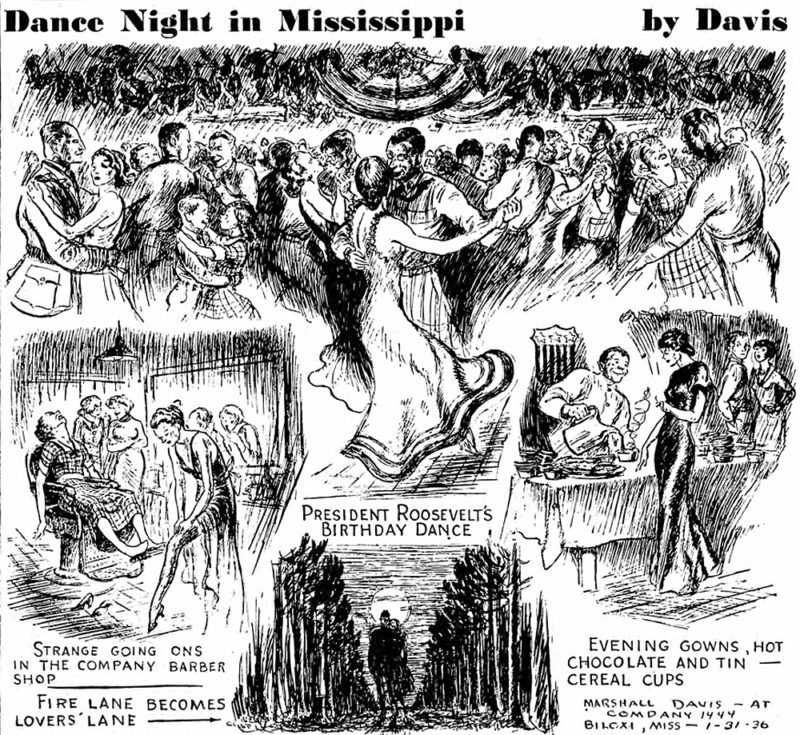
March of Dimes Snags White House Mail Deliveries
By September 1937, it was realized if a cure were to be found more research dollars would be needed. With FDR’s leadership the National Foundation for Infantile Paralysis was formed.
In the weeks before the January 1938 Presidents annual Birthday Ball Hollywood comedian Eddie Cantor began a radio appeal for help. He encouraged everyone, young and old, rich or poor, to send a dime or two to the White House. He called it a March of Dimes, a name which caught on and garnered tremendous public support.
Days before the Presidents Birthday gala the White House was flooded with an avalanche of 30,000 letters. So massive was the deluge of donations the regular distribution within the executive mansion was disrupted; none of the official mail could be delivered.
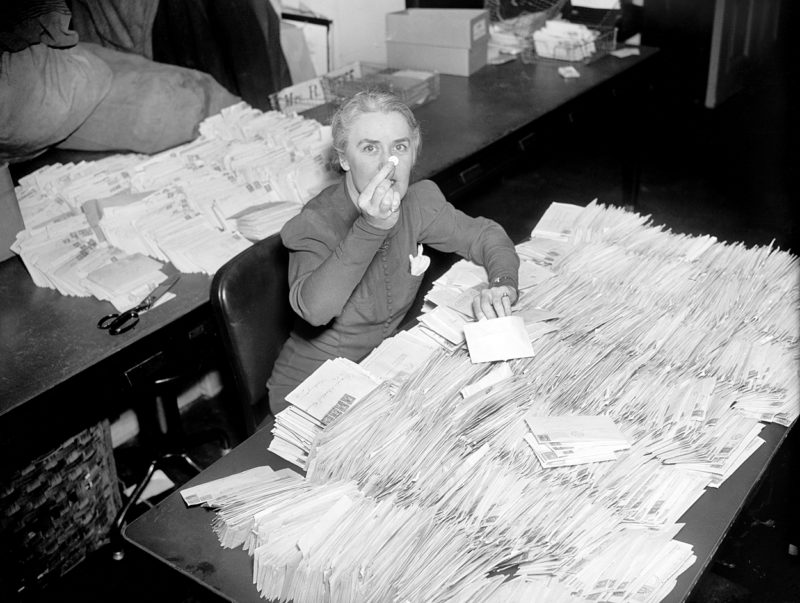
Presidents Birthday Overshadowed By War
After the United States entered WWII, at the end of 1941, the annual birthday celebrations would continue, but on a much smaller scale. Referencing the FDR Library official historical appointment calendars detailing Roosevelt’s daily activities, “Day by Day” , it is now known how FDR spent his last birthday in 1945.
On January 23, 1945, FDR boarded the USS Quincy and set sale for the Yalta Conference to meet with British Prime Minister Winston Churchill and Soviet Premier Joseph Stalin, it was a somber and dangerous time for the “Big Three” meeting.
The President was also gravely ill.
Two days before his 63rd birthday the USS Quincy had entered the “European-African-Middle East Theatre of War.” On January 30th, his birthday, the president continued his journey through “the dangerous seas in and about the Straits of Gibraltar”. Later that evening FDR and the members of his “mess”* were “tendered a birthday dinner party”. In Washington, D.C., Eleanor Roosevelt, surrounded by stars of the stage and screen, would ceremoniously cut a birthday cake. Later she would make the rounds of the presidential birthday parties in Washington.
Dies on the Eve of Victory
After the Yalta Conference, the President returned to Washington spent, but buoyant with hopes for an enduring peace.
At the end of March he once again made a visit to the “Little White House” in Warm Springs to rest. There, on April 12, 1945, he succumb to a massive stroke and died.
Germany would unconditionally surrender the following month.
The Crusade Continued
The FDR Birthday Balls would continue until 1948. President Harry Truman urged nationwide support for the “…unfinished task of Franklin Delano Roosevelt… It must and shall be carried to complete victory.” Three of the Roosevelt grandchildren would contract a mild form of the polio virus. Curtis in 1949, then Haven and Nina in 1952.
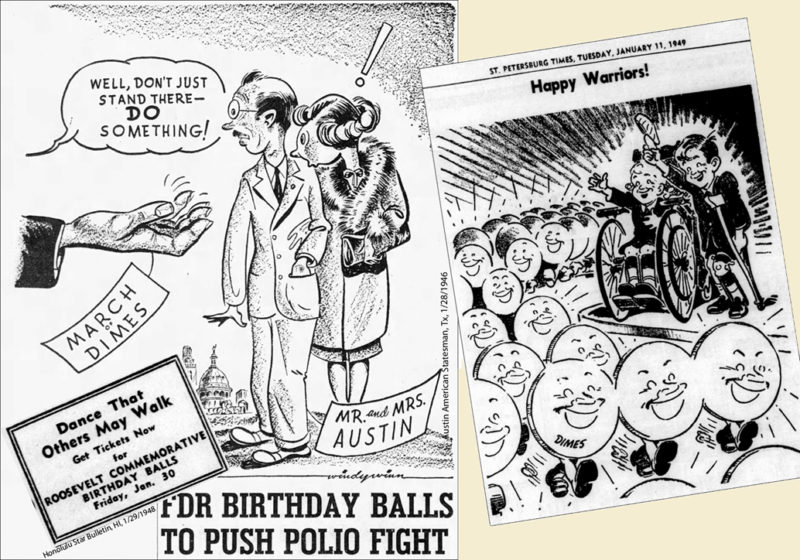
The successful “March of Dimes” appeal would continue through the 1950’s and 1960’s making possible the research of Doctors Jonas Salk and Albert Sabin, both who developed effective vaccines which would bring the scourge of polio under control in America and other industrialized countries.
Eleanor Roosevelt wrote about the importance of continued research and funding. Once the vaccine became available she urged those who had not yet been inoculated to do so. Eventually polio would be eradicated in America.

Polio and World Wide Eradication
By the late 1950’s, the Foundations changed its mission to birth defects prevention and in the 1970’s changed its corporate name to the March of Dimes Birth Defects Foundation.
In 1988, the Global Polio Eradication Initiative (GPEI) was launched; a public-private partnership with a goal to eradicate polio worldwide. The effort once again brought attention to the scourge of Polio and the effort to completely eradicate it was publicized most prominently by the Bill and Melinda Gates Foundation.
On the occasion of the 3rd Presidential Birthday Balls, in 1936, President Roosevelt’s thanked those attending and wisely stated:
No single agency, whether it be the doctor, the hospital or the research laboratory, can cope individually with this great problem; we can do it only by joining our efforts.
*(Members of FDR’s mess included Mrs. John Boettiger, Adm. William D. Leahy, Ross T. McIntire, Vice Adm. Wilson Brown, Gen. Edwin M. Watson, James F. Byrnes, Stephen T. Early, and Edward J. Flynn.)
Sources:
Official Annual of District G, Civilian Conservation Corps, 1934, Companies #251, 283, 285 and 286; Pasquill, Jr. Robert, Civilian Conservation Corps in Alabama 1933 – 1942; telephone conversation with Robert Pasquill, Jr.; National Archives and Records Administration College Park, Md; HAPPY DAYS newspapers; Franklin Delano Roosevelt Library, Hyde Park, NY., Day By Day; CCCLegacy.org, National Association of Civilian Conservation Corps Alumni, NACCCA Journals; MarchofDimes.org; Library of Congress.
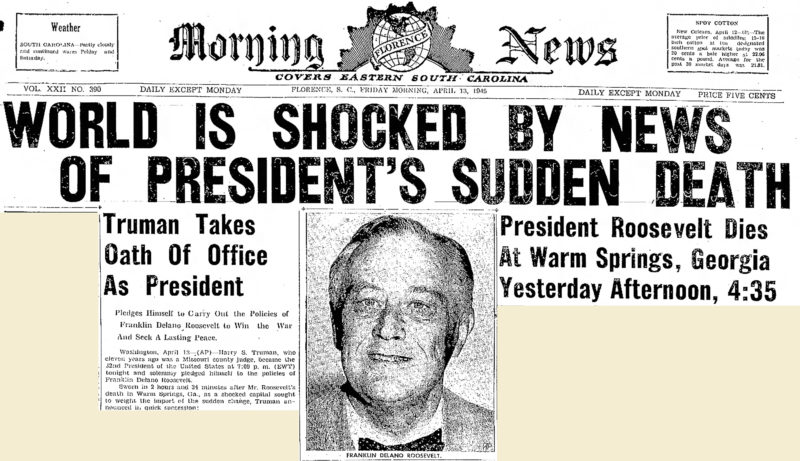
Very very interesting. Thank you for all the research and history that is never taught.